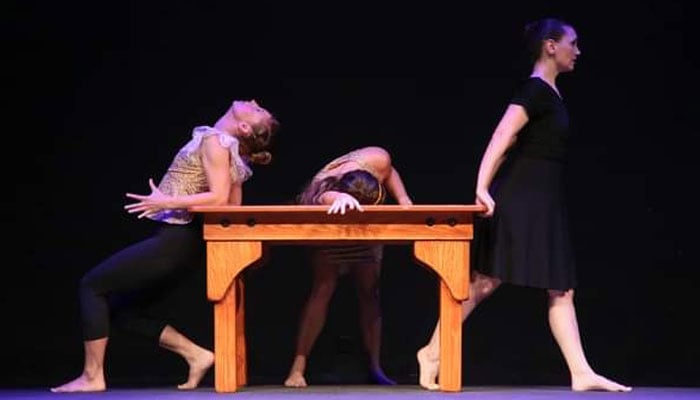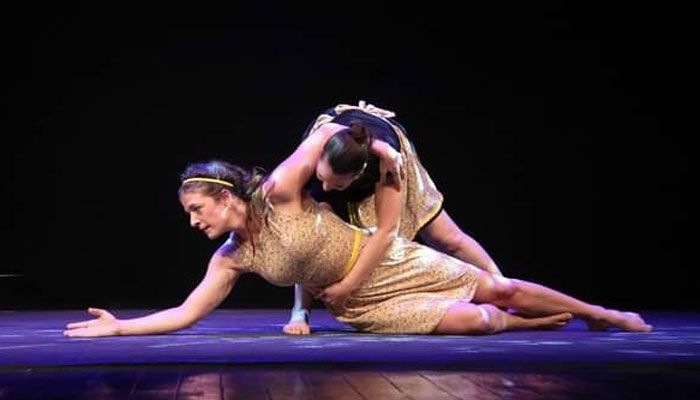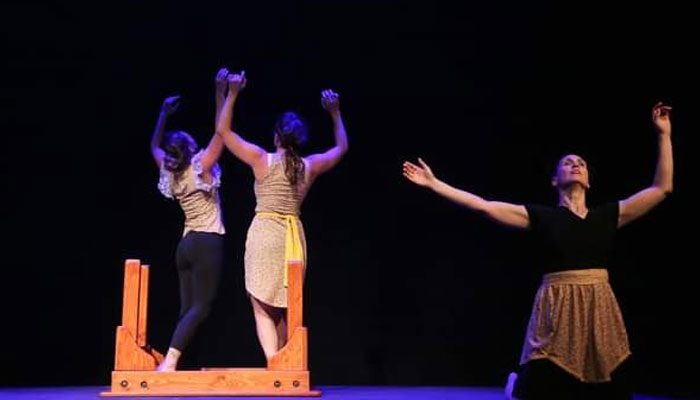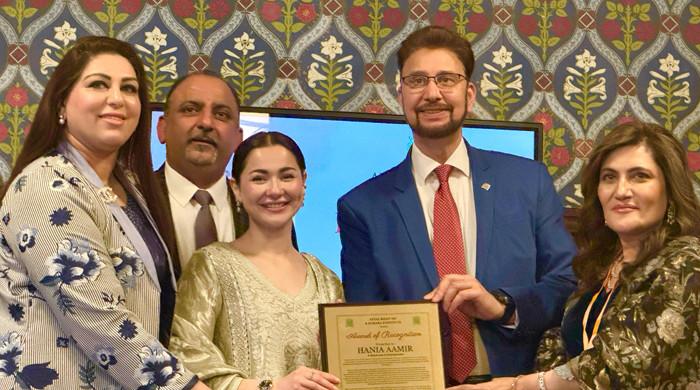Through The Waves: American thespians bring visceral art of physical theatre to Pakistan
Actors talk about their experience of bringing the art of physical theatre to Pakistan and expressing grief through movements
September 13, 2023

As the Pakistan Theatre Festival kicked off at the Arts Council in Karachi, a huge line-up of thespians from all over the world gathered to entertain and enchant their viewers in the port city.
American theatre actors Hannah Gaff and Juliana Frick, who are part of an ensemble at the Uplift Theatre Group in the United States have also brought their internationally-acclaimed play Through The Waves for Pakistani theatre-goers.
Their reprise performance of the movement play was on display at the Arts Council's auditorium on Tuesday with spectators lauding the beauty of physical theatre as witnessed during their enchanting show.
In an exclusive interview with Geo.tv, the actors talk about their experience of bringing the art of physical theatre to Pakistan, their motivation to take up the art, portraying grief through movements and much more.
Geo.tv: How do non-verbal performances such as the one in Through the Waves differ in experience from a production with dialogue?
Non-verbal performance is visceral and comes from a feeling-based experience, but a production with dialogue often engages the intellect. While spoken language can be more common in the theatre, we believe that it isn’t always accessible.
Non-verbal storytelling speaks with the language of the body, which is universal. We all move. We all breathe. We all feel. Our hearts all beat. Even if the mind might not be able to grasp a story told non-verbally, we believe that the connections that are made for the audience are deep and meaningful.
Would you say it is more difficult to express grief in your acting as opposed to other emotions?
Not necessarily. In fact, many actors actually struggle with expressing joy as much as grief. In our physical approach to acting, we access emotions through the breath and the body. By breathing in the way one breathes in deep sadness and taking a body shape, such as hunching the shoulders forward, we can access felt memories of the emotion and touch it immediately.

There are many other ways to access emotions onstage, but this is just one approach. Because we’ve all felt true grief in our lives, it can actually be one of the easier ones to access more readily.
How, if at all, do your performances affect you and how do you recuperate?
When we perform, we are embodying something other than ourselves and this process allows room for personal growth. Our show is about a woman’s journey through grief and deals with pretty big emotional states that all humans go through in life.
It can be a lot to move through those emotions each night, but because of the structure of the show, it ends with a catharsis and we feel quite uplifted by the end.
Our show is very physical as well. We use acrobatics, dance and martial arts to tell our story so our bodies are often very tired after performing. We always recuperate by getting a lot of rest, sleep, and eating well.
In the various places you have performed this show, how do audience reactions differ or align, and was your aim of expressing grief fulfilled?
We’ve performed this show around the United States, in Egypt and now in Pakistan. Regardless of where we are in the world, audiences often share that watching the show moves them emotionally and that they recall memories of their loved ones and personal experiences of grief. We loved performing in Pakistan because the audiences have been so warm, responsive and vocally responsive during our show. We really felt their presence during our performances.
How was your experience performing in Pakistan?
This was our first time performing in Pakistan. We had no idea how the show would be received. It is a very vulnerable experience to put work in front of people, especially a brand new audience in a completely different cultural context. There are no guarantees an audience is going to be receptive, but we were so grateful and excited for the opportunity to bring this show to Karachi.

Before our first show here we were very curious, would the audience connect with what we were doing? When the lights came on at the end and we could see people rise to their feet cheering it was a magical feeling. We made a show that is so personal to us on the other side of the world and brought it all the way over to Pakistan and the people in the room with us totally connected with it.
What was your motivation behind pursuing physical theatre?
We all met at a school for physical theatre in California. In addition to all having trained in making and performing theater, we each had some other movement training (circus, dance, martial arts etc). We were interested in how we could combine the two: approach character and story through movement, and could our bodies say the things that are usually left unsaid in words.
This show evolved out of some of our earliest work. We looked at the threads of stories and gestures we had and realised there was a story there we wanted to tell — one woman's journey through grief, different parts of her played by the three of us.
We have developed the piece over many years. We only perform it once a year and each time we have to relearn it and it inevitably grows and deepens. We are still discovering new things and refining details, as actors in the show.











